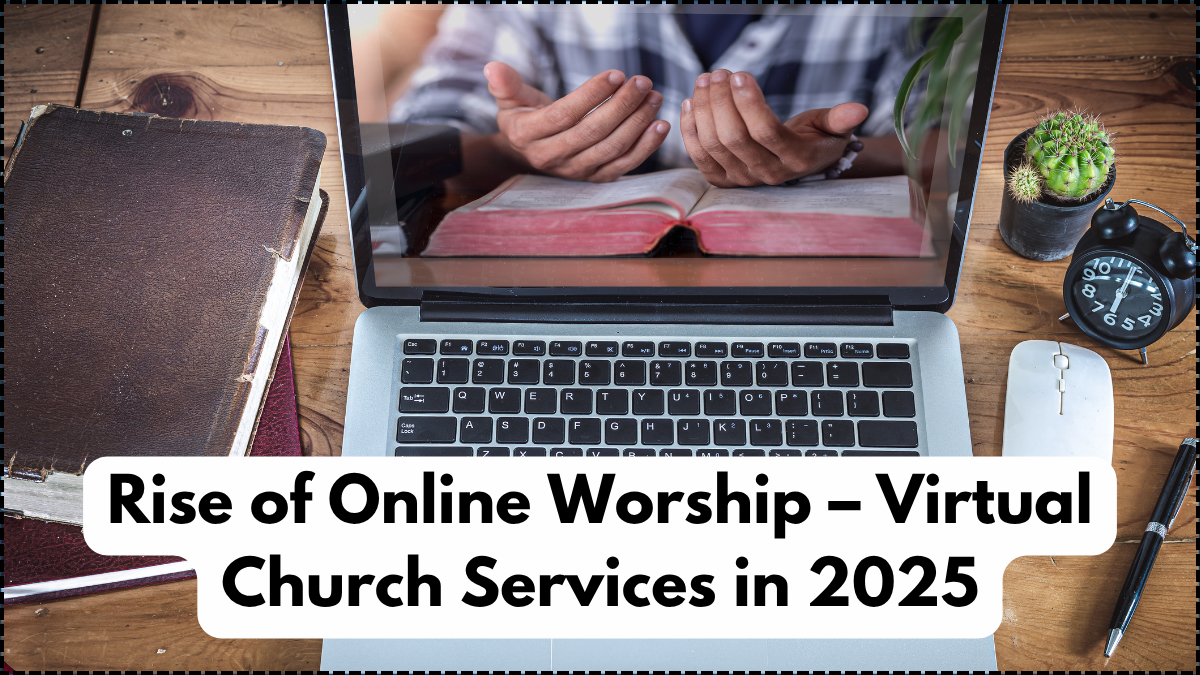Online worship has evolved from a pandemic-era solution to a dominant force in religious life. In July 2025, churches worldwide continue investing heavily in digital infrastructure, livestream technology, and remote fellowship tools. The shift is no longer just a necessity—it’s a strategic move to reach global believers who prioritize flexibility, accessibility, and digital connection.
In a time when digital spaces have become second nature for everything from education to healthcare, faith communities are no exception. Churches are now reimagining their role—not just as buildings, but as networks of connection across time zones and cultures. Whether you’re in a megacity or a rural town, virtual sermons are now as reliable and rich in spiritual depth as any in-person gathering.

Why Worshippers Are Sticking With Virtual Church Services
For many, the convenience of attending worship from home or on the go has removed long-standing barriers. Parents with young children, individuals with disabilities, and members of remote communities can now join weekly services without logistical strain. And it’s not just about accessibility—it’s about engagement. Virtual sermons often include interactive features like live chat, Q&As with clergy, and breakout prayer rooms that add dimensions traditional services sometimes lack.
The numbers back it up. Data from mid-2025 shows consistent growth in online worship attendance even after the global return to normalcy. Hybrid models have proven effective, but entirely virtual congregations have also flourished—many reporting stronger participation rates and broader geographical reach.
Virtual Sermons in 2025: Smarter, Shorter, Stronger
Unlike their early counterparts in 2020, today’s virtual sermons are built for attention and retention. Churches have leaned into analytics, tailoring sermon lengths and formats to suit digital consumption habits. The average sermon now clocks in at 18-22 minutes—optimized for mobile viewing and designed to maintain engagement throughout.
Moreover, sermons today incorporate high production values, from multiple camera angles to studio-quality sound and lighting. Many platforms also allow worshippers to view sermons on-demand, subscribe to daily devotionals, and even receive personalized spiritual content through AI-based recommendations.
The Role of Technology in Online Worship Trends
Technological integration is the driving engine of current online worship trends. Churches are leveraging platforms like YouTube Live, Zoom, and proprietary apps to deliver sermons and coordinate ministry efforts. But it goes beyond just broadcasting. Some congregations use VR environments to simulate the feeling of being physically present in a sanctuary. Others have implemented blockchain for digital tithing, ensuring transparency and security.
Below is a quick look at how churches are embracing tech in 2025:
| Innovation | Purpose | Impact |
|---|---|---|
| Livestreaming | Real-time virtual sermons | Global access to weekly worship |
| AI-based tools | Personalized spiritual growth paths | Higher retention and relevance |
| Virtual Reality | Immersive worship experiences | Simulates physical community |
| Digital Tithing | Secure, transparent donations | Boosts trust and giving consistency |
| Multilingual Tools | Translation during live worship | Makes services inclusive and international |
Digital Discipleship and Beyond
Worship is just one part of faith life. Discipleship, community outreach, counseling, and study groups have all moved online. Small groups meet over Zoom. Bible studies happen in Discord servers. Pastoral counseling is often conducted via secure video calls. These aren’t placeholders—they’re the new standard.
Churches that once feared technology would dilute the spiritual experience now recognize its ability to deepen connections. In 2025, faith isn’t bound by buildings—it’s bound by intention, message, and digital tools that carry those values across screens.
Conclusion: Faith Has Found a Digital Home
As we move through the second half of 2025, it’s clear that online worship trends are not a passing fad. The success of virtual sermons and the infrastructure supporting them points to a future where digital and spiritual life continue to intersect. Churches that embrace this shift stand to expand their reach, deepen their impact, and stay relevant to the next generation of believers.
FAQ
What are the most popular platforms for online worship in 2025?
YouTube Live, Facebook Live, proprietary church apps, and VR platforms like AltspaceVR are leading the charge.
Are virtual sermons less effective than in-person sermons?
Not necessarily. Many find them more engaging due to interactivity, shorter formats, and the ability to rewatch.
How do churches handle digital giving securely?
Most use encrypted, blockchain-backed platforms or trusted payment processors like Tithe.ly or PayPal for transparency.
Can virtual churches offer community support like physical churches?
Yes, through video counseling, group chats, and online ministries, many offer equal or even improved support structures.
Will online worship replace physical churches entirely?
Unlikely. Hybrid models will continue to dominate, combining digital reach with in-person depth.
Click here to know more